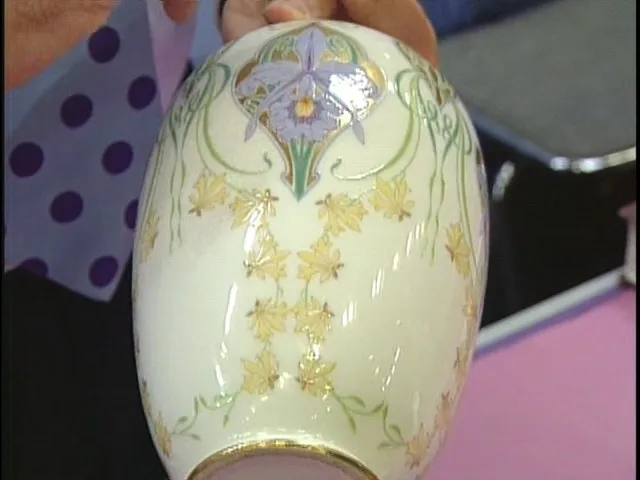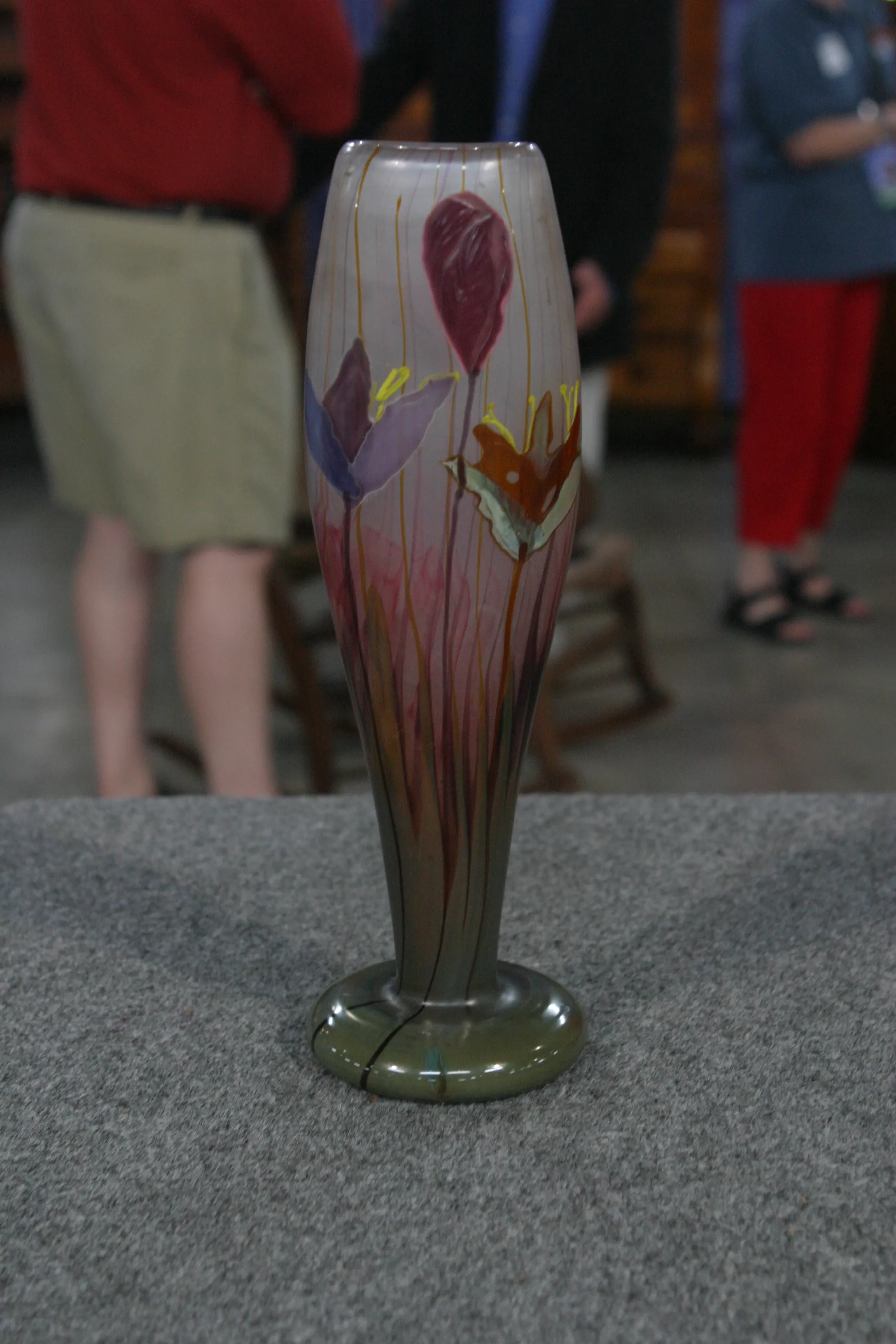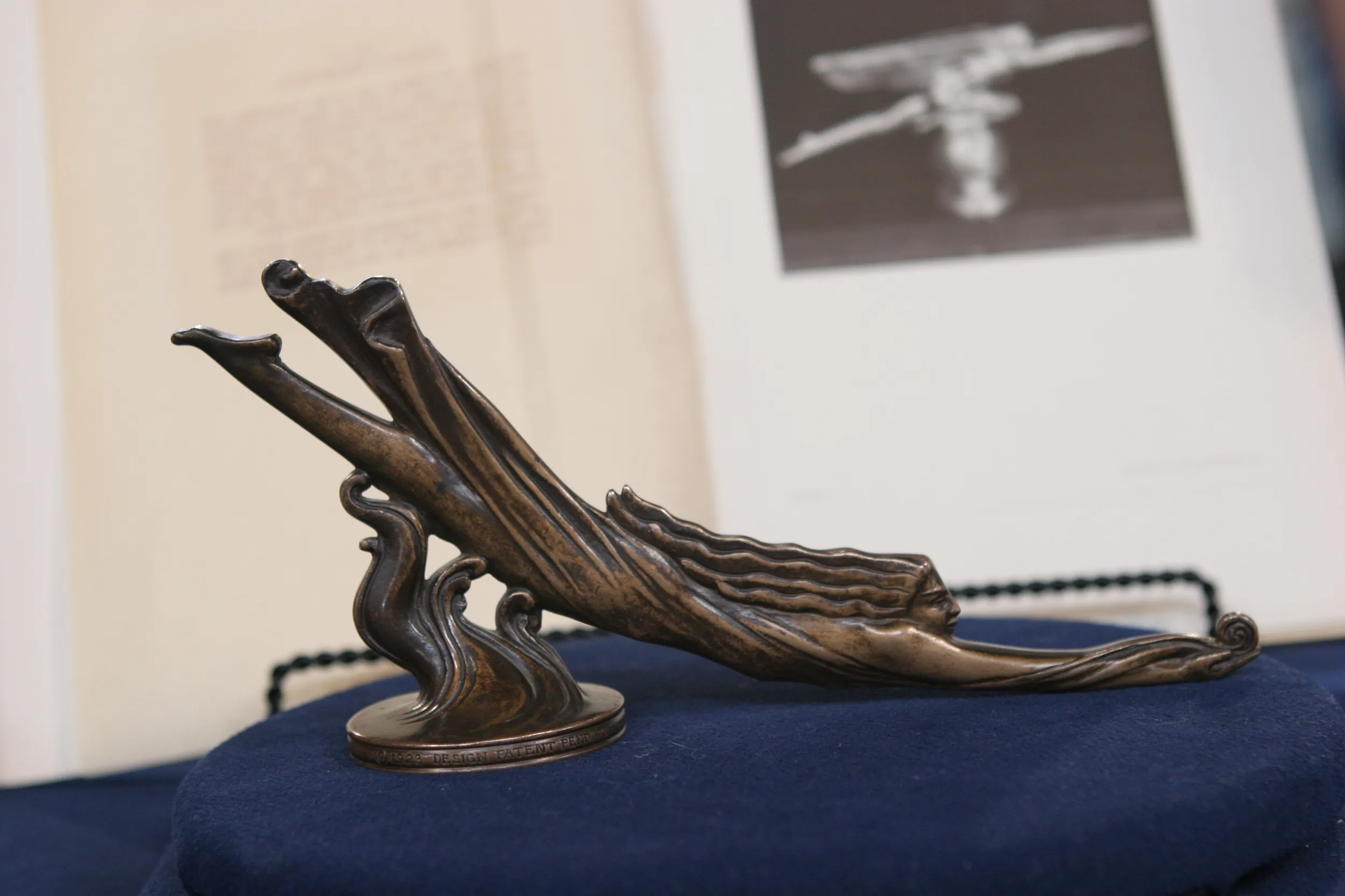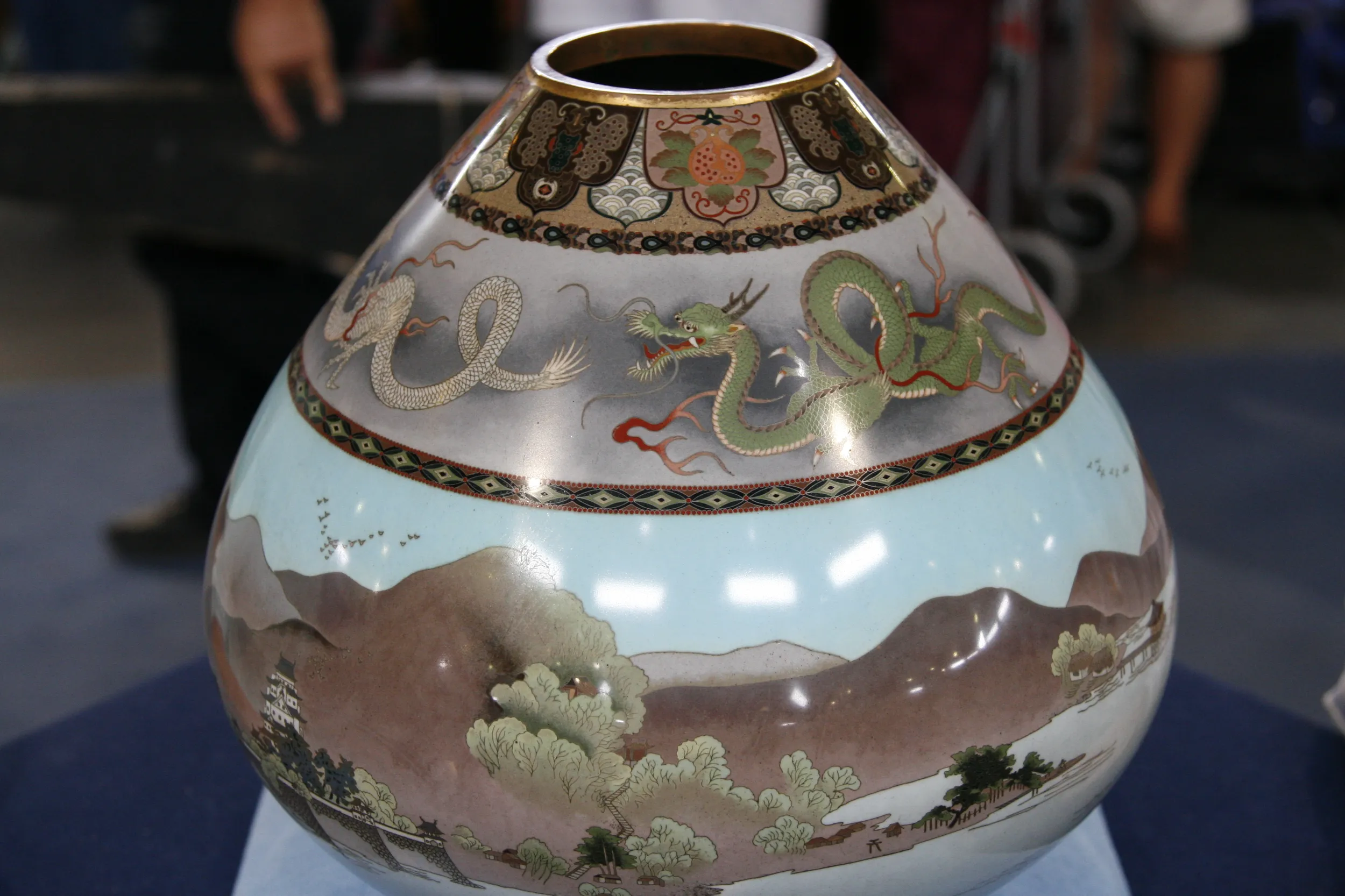GUEST: I know that it's a Tiffany silver vase. My grandmother took it as collateral on a loan, and the lady couldn't repay the loan, and so it came into my family, and I've inherited it.
APPRAISER: How much was the loan for, if you don't mind my asking?
GUEST: Uh, I believe it was either $300 or $500 back in the '50s.
APPRAISER: Now, you said it's made by Tiffany. Tiffany. And you know that because?
GUEST: The mark on the bottom.
APPRAISER: Okay.
GUEST: And we communicated with Tiffany. We sent them photographs, and, and they weren't able to give us any information because the records from
the time period have been, uh, lost.
APPRAISER: When do you think this was made?
GUEST: I believe it's made in the 1860s.
APPRAISER: Okay. Well, in the 1860s, in America and in Europe, we experienced what was called the Renaissance Revival. And in this, you have use of a lot of different Renaissance motifs. This is called a Renaissance herm figure. But notice how it tightly packed it in and how beautifully proportioned it is, not only on the front, but also on the side here, with these winged figures, and on the back. And on this side, we have the female herm figure. Now, as we tilt back and look here, we get the Tiffany mark. It says "sterling silver," and then it has a date letter. It's a capital C, which would actually make it 1902 to 1907.
GUEST: Oh. That much later.
APPRAISER: Which is really interesting, because they experienced a little bit of Renaissance Revival at that time, as well. But this is an amazingly well-made piece. Given the right amount of time, we might be able to find out who designed this vase, because this was not a general production piece.
GUEST: Oh, oh, that, that was better...
APPRAISER: And these are cast, and there is a serial number on the bottom here, which we did look at, as well.
GUEST: Okay.
APPRAISER: And I like to say that that serial number is the key to open the Tiffany archives. And the Tiffany archives do have records from this time period. So I think, if we altered strategy a little bit, we might be able to find out who designed this vase. Now, we were talking about condition a little bit earlier.
GUEST: Yes, I was wondering about whether I should try and remove the remaining tarnish inside and on the edges.
APPRAISER: Okay. Well, some of it is tarnish, and some of it is factory-applied. You did clean down some of the texturing here, which makes me believe that some of the factory patina that they put on to create that three-dimensionality is now gone. Now, in this sense, some things can be reversed.
GUEST: All right.
APPRAISER: But the good rule of thumb is, if in doubt, leave it a little dirty.
GUEST: Don't. Yeah.
APPRAISER: We like it a little dirty here. Okay.
GUEST: But I didn't really do much harm to it.
APPRAISER: I don't think you did a lot of harm to it.
GUEST: Okay, good, good.
APPRAISER: So, you know, whew, you don't need to worry about that.
GUEST: That's a relief.
APPRAISER: But, uh, I can guess that you think it's worth a little bit more than the $300 or $500 that your mother-in-law had to pay for it, yeah.
GUEST: I'm hoping that that's true, yes.
APPRAISER: Well, at auction, I would think that this is worth in the $30,000 to $50,000 range.
GUEST: (laughing) Oh, my God. That's amazing.
APPRAISER: That's a heck of a vase.
GUEST: Thank... Thank you.











